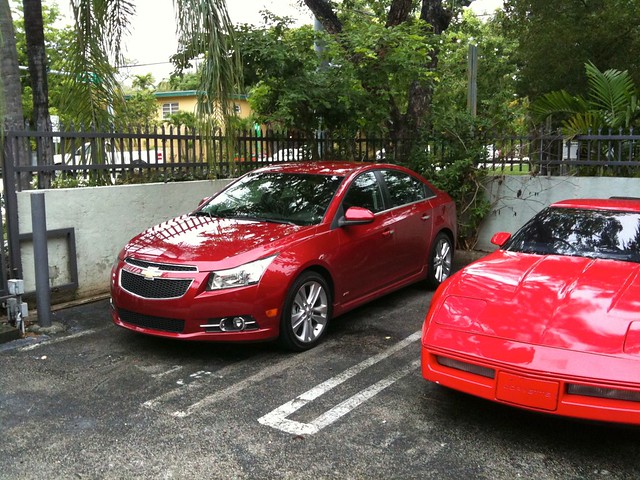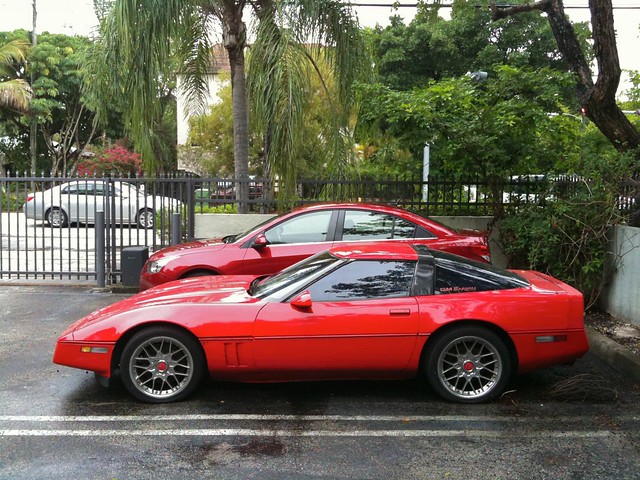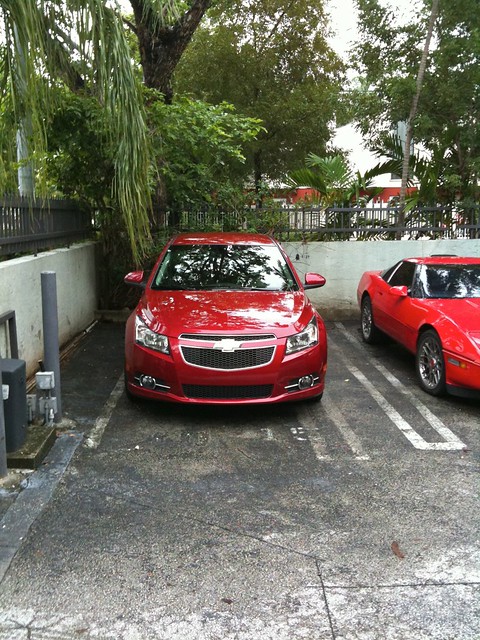Car Review: 2011 Chevrolet Cruze
Message from 2022
This post is pretty old! Opinions and technical information in it are almost certainly oudated. Commands and configurations will probably not work. Consider the age of the content before putting any of it into practice.
The cars used in this review were provided by General Motors.
The Chevrolet Cruze is what I would consider to be an “compact car;” it’s not frighteningly big, not frighteningly small, good on gas, and is the kind of car I would drive to work in if I had a commute.
Most of my impressions are from a weekend where I drove from Miami to Melbourne, three hours each way. The trip went like this:
- Use switchblade key to open trunk.
- Load trunk with bags, notice that there’s slightly more room than in the trunk of my 1997 Mitsubishi Mirage, much more room than the 2011 Chrysler 200 Convertible or the 2009 Chevrolet Corvette Convertible, and much less room than the Ford Crown Victoria Police Interceptor used for taxis in Miami.
- Close trunk.
- Unlock car, sit down, and buckle up (always buckle your seat belt when you enter a car or truck).
- Plug iPhone 3GS into armrest for charging and music.
- Start car, drive away.
The driving experience of the “LTZ RS” version I had was pretty standard. It didn’t feel floaty, shaky, or otherwise frightening at highway speeds in the least; but at the same time it didn’t have a ton of power to spare for passing. I suspect I’d enjoy the manual transmission version more on this front, since the auto is slow, even when manually commanded (although it does have six gears). Coming off of a stop, there’s a sweet spot above 3500 rpm where you can feel the extra power from the turbo, but it’s not a sports car by any means. This also means that it’s not loud and that the suspension isn’t hair-raising and jittery, which is nice.
The interior is quite nice for the size of the car; it’s better than the 2010 Prius, but not the 2009 C-klasse. The fabric covering on the dashboard looks nice, and doesn’t feel as hot as a plastic dashboard does after a day in the sun. The leather seats were okay, although I think fabric ones would be nicer in Florida. The instruments are easy to read, but I think the VFD display between the gauges could stand to show a bit more information.
In particular, while the display does give you some nice options such as the next navigation item, average fuel economy, and range until empty, it could stand to maybe put two things on the same page, provide an instantaneous fuel economy readout, and maybe a bit of audio information.
The OnStar navigation works, but it’s a bit janky and slow to get it set up. It’s nice that the car doesn’t store any map data that will be out of date long before it’s actually loaded into the car, but calling OnStar and using voice recognition to load in a new route, and being unable to quickly recover from a missed turn is pretty lame compared to what you see on a cell phone or other cars with navigation.
The audio system was pretty reasonable; it sounded fine, the XM worked well, but browsing a large collection (> 100 albums) on my iPhone was hard, since there’s no voice search, just a four-line screen and a dial to page through it. Dialing the phone over Bluetooth was also a dicey proposition; I never was able to call somebody by name (including difficult entries such as “Home” or “Shawn Baker,”) and had to use the dial to pick from the whole phone book or recent call lists pretty often. My #1 annoyance was that the navigation system wouldn’t duck out in a phone call like the stereo would, so everyone got an earful of turn-by-turn directions.
Since it’s a compact car, I didn’t try and put four 6’ guys in it for a trip to Epcot; my parents got the vehicle for the day, and liked it. My dad in particular said that he’d consider one once the reliability is a known factor, and that him and my mom didn’t have any really problems with it around town.
I didn’t see fantastic gas mileage during my travels, but did get about 35mpg on the highway with A/C on. Other than that, there’s not much to say; it’s a quietly competent compact car, with nice toys inside.


